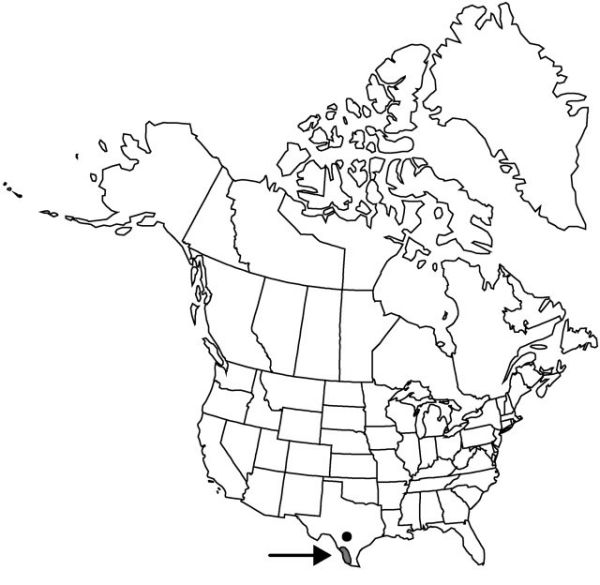Agave asperrima var. asperrima
Plants acaulescent, frequently suckering; rosettes not cespitose, 7–10 × 15–20 dm. Leaves spreading to recurved and mostly reflexed, 60–110 × 12–18 cm; blade light green to grayish, without bud-prints, lanceolate, scabrous, rigid, adaxially plane and deeply guttered from mid blade to base, abaxially convex; margins straight, toothed, teeth single, usually deflexed along lower leaf edge, 8–15 mm, 1 cm apart; apical spine dark brown to blackish, subulate to acicular, 3–6 cm. Scape 4–7 m. Inflorescences paniculate, not bulbiferous; bracts persistent, triangular, 3–10 cm; lateral branches 8–14, slightly ascending, comprising distal 1/3 of inflorescence, longer than 10 cm. Flowers 14–18 per cluster, erect, 6–8 cm; perianth yellow, tube cylindric, 13–18 × 14–16 mm, limb lobes erect, subequal, 18–26 mm; stamens long-exserted; filaments inserted just above mid perianth tube, erect, yellow, 5–6.5 cm; anthers yellow, 24–30 mm; ovary 3–4 cm, neck constricted, 4–6 mm. Capsules short-pedicellate, oblong, 4–5 cm, apex beaked. Seeds 6–7 mm. 2n = 174.
Phenology: Flowering late spring–summer.
Habitat: Sandy to gravelly, often calcareous places in desert scrub
Elevation: 500–1500(–1900) m
Distribution

Tex., n Mexico.
Discussion
M. S. Cave (1964) reported chromosome counts of n = 74–93; H. S. Gentry (1982) stated that only one of Cave’s counts applied to var. asperrima and he gave it as n = 87.
Selected References
None.